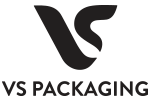Food packaging materials are substances used to protect, preserve, store, and transport food products safely from the point of production to the consumer. They play a crucial role not just in hygiene and shelf-life, but also in branding, sustainability, and customer experience.
From takeaway containers to eco-friendly trays and wraps, choosing the right food packaging material is essential for businesses in Australia’s food industry.
🍽️ Types of Food Packaging Materials
1. Paper and Cardboard
Paper-based packaging is one of the most widely used materials in the food industry due to its affordability, printability, and eco-friendliness.
Common uses:
- Burger wraps
- Kraft paper bags
- Single/double wall paper cups
- Cardboard snack boxes
Pros:
- Biodegradable and recyclable
- Lightweight and customizable
- Cost-effective
Cons:
- Not moisture-resistant unless laminated
- May not withstand greasy or oily foods without coating
2. Plastic
Plastic is a versatile and widely used food packaging material, offering durability, flexibility, and transparency.
Common uses:
- Takeaway containers
- Clear salad bowls
- Lids for paper cups
- Vacuum-sealed trays
Pros:
- Strong and moisture-resistant
- Lightweight and shatterproof
- Suitable for hot or cold items
- Cons:
- Environmental concerns with single-use plastics
- Not always recyclable, depending on type
3. Sugarcane Bagasse (Eco Packaging)
Sugarcane fiber, or bagasse, is a by-product of sugar production and a popular sustainable material for food packaging.
Common uses:
- Clamshell containers
- 3–5 compartment trays
- Dinner boxes
Pros:
- 100% compostable and biodegradable
- Heat-resistant (microwave and oven safe)
- Durable and grease-resistant
Cons:
-
Slightly higher cost than plastic
-
Limited design flexibility
4. Aluminium Foil
Aluminium foil is ideal for heat retention and protection from light, oxygen, and moisture.
Common uses:
- Foil food trays
- Sealing wraps
- Baking and grilling containers
Pros:
- Excellent heat retention
- Oven-safe
- Recyclable
Cons:
- Prone to tearing
- Not suitable for acidic foods
5. Bioplastics and PLA (Polylactic Acid)
Derived from renewable resources like corn starch, PLA is a popular alternative to traditional petroleum-based plastic.
Common uses:
- Cold drink cups
- Clear salad lids
- Cutlery
Pros:
- Compostable in industrial facilities
- Transparent and durable
- Renewable source
Cons:
- Not suitable for hot liquids
- Limited composting infrastructure in some regions
🌿 Choosing the Right Food Packaging Material
When selecting materials for your food business, consider the following:
- Food type (dry, wet, hot, cold, greasy)
- Environmental impact (recyclable, compostable, reusable)
- Branding potential (printable surfaces, custom shapes)
- Compliance with Australian food safety regulations
At VS Packaging, we offer a wide range of food packaging supplies across Australia — including paper, plastic, sugarcane, and more — tailored to the needs of cafes, restaurants, caterers, and takeaways.
🛍️ Shop Trusted Food Packaging Materials in Australia
Whether you’re after eco-friendly trays, paper cups, bulk food containers, or custom printed packaging, VS Packaging has you covered with fast delivery, wholesale pricing, and expert service.
🛒 Explore our full range: vspackaging.com.au

